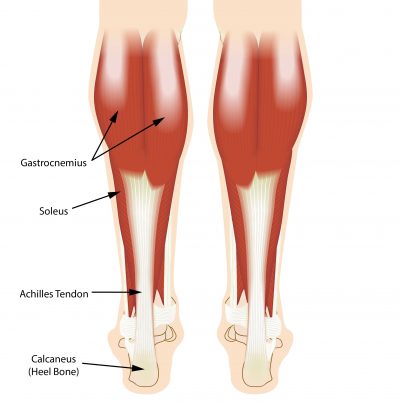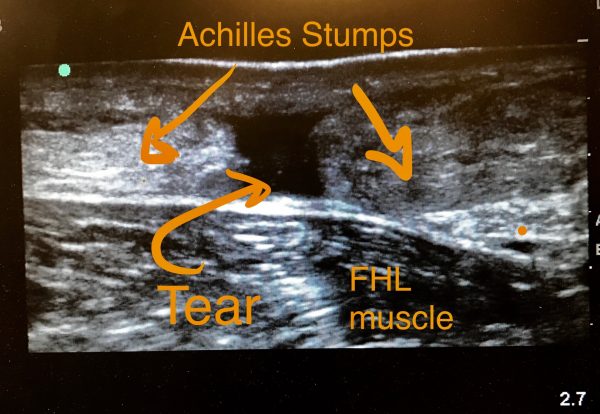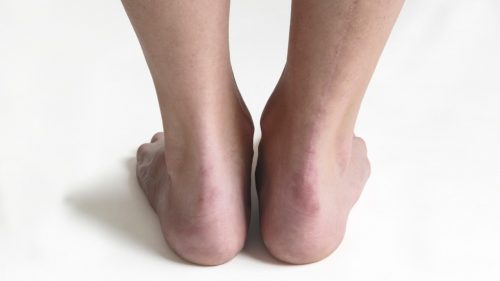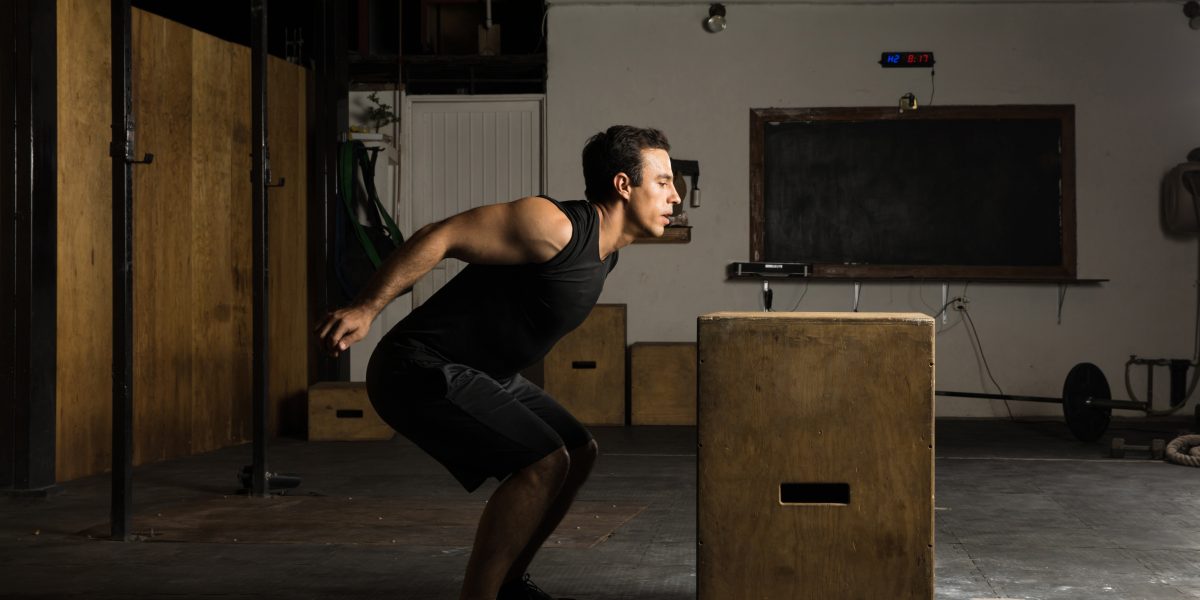HIIT and Achilles Tears
Many people worry about High-Intensity Interval Training and Achilles tears. While it can be a devastating injury, it is fortunately very rare. Achilles tendon tears are common in sports where the athlete jump and move in quick short bursts. Tennis, basketball, and volleyball carry a higher risk than HIIT. But the jumping and gymnastic activities within popular functional fitness workouts can pose a danger as well.

What is the Achilles Tendon?
It is one of the biggest tendons in your body. The Achilles connects your Gastrocnemius and Soleus muscles to your heel. It is usually pretty easy to identify on the back of the ankle. The Gastrocs start on the femur, above the knee, and end in the Achilles. Because of that, the Achilles tendon is under the most tension with your knees out straight. So when you land on a flat foot with your knees straight, you are at higher risk for injury.
Gymnasts are most at risk of Achilles injury when they land vaults and dismounts with the legs fully extended. Functional Fitness athletes are at risk in the same position. This is one reason why HIIT coaches encourage most of their athletes to step down from the top of a box. Stepping off a box helps avoid the chance of injury. Jumping off the box is necessary for speed in athletic competition, but is probably best avoided in your general physical preparedness clients.
Jumping and landing softly also helps to lower your chance of Achilles injury. Achilles tears can be avoided by landing in a flexed position. Having the hips, knees, and ankle flexed when landing puts your body in a position to absorb the forces across all the ligaments and tendons of your lower body. It also avoids adding sudden stress to an already tight tendon, which is what leads to most tendon tears. (Tendons are viscoelastic. For more information on what that means and how it leads to injuries, keep an eye on upcoming posts.)
Chronic Achilles Tendinosis
Repetitive stress to the Achilles leads to microscopic tears. When you create more of these tears than your body can heal, you develop tendinosis. As opposed to the sudden nature of complete tears, these present with chronic pain. If your athletes develop Achilles tendinosis, you will notice a thick swollen area in the tendon just above the heel. It will typically be just above the back of their shoe. The athlete will often have pain. But in the early stages, an observant coach may notice the swelling before it becomes painful.
You may also notice asymmetry in their movements and decreased mobility of the affected ankle. You may see an angle to their bar when squatting. Someone who used to be able to overhead squat may suddenly have difficulty with that exercise. They may have a hard time keeping their heel on the ground while squatting. Or maybe they are not getting full depth in their squat anymore.
Treatment of Achilles Tendinosis
Chronic Achilles tendinosis can be a risk for acute full tears. It’s best to have them seen by a physician to begin treatment. If an athlete is under care for this problem, you should reduce the stress put on their Achilles. This means that you should prevent them from jumping, hopping, or performing lifts that require triple-extension. Exercises that keep the foot planted are typically fine, like squats and deadlifts. As always, let pain be the primary guide. Having a working relationship with their physical therapist can help you as a coach when scaling the athlete’s activity.
Recognizing An Achilles Rupture
Achilles tears are often easy to identify. The athlete usually feels like someone hit them in the back of the leg and there is usually a loud pop. While they may have sudden pain that drives them to the ground, most people will be able to walk fairly quickly. They will have pain, limp, and won’t be able to push off with the injured foot.

Treatment of an Achilles Rupture
If you suspect that you or one of your athletes has torn their Achilles, a trip to the doctor is needed. Usually going to an ER or an urgent care center is a good option. A visit to an Orthopedic Surgeon within a week after injury is the next step. But not all Achilles tendon tears need surgery. Some can be treated with casting. However, in either case, care should be started sooner than later.
Traditional Achilles surgery involves a large incision with direct suturing of the ends of the tendon to each other. But new minimally invasive surgery may be an option. Minimally invasive surgery keeps the risks of adhesions, infection, and other complications to a minimum. It does have a higher risk of lengthening at the repair site. A surgeon needs to discuss all of these aspects and more with the patients when deciding on the treatment of Achilles tendon ruptures.

Recovery After Achilles Tendon Rupture
Achilles tendon injuries can cause problems in high-level athletics. 30% of professional athletes will not be able to return to professional competition after sustaining an Achilles tear. In those that do get back to their sport, they are noted to have “lost a step.” This decreased function and capacity to play occurs for up to 2 years after the injury. Fortunately, most recreational athletes do not have as high of a level to return to. So they can usually get back to the gym and athletics more quickly.
As a coach, you should be prepared to deal with the psychologic issues of such a significant injury. Athletes will need understanding and encouragement. They will often be worried about repeat injury or frustrated with the slow return of function. Be ready to start all over with them, using progressions instead of regular exercises.
As an athlete, it’s important to pay attention to your surgeon and therapist. Even though the repair feels good, it may not be ready for activity. Your pain will often be gone before the tendon has healed sufficiently. And there is just no arguing with biology! Even months after the repair, your body will still be going through the process of remodeling the tendon and maximizing its strength.
Key Points about HIIT and Achilles Tears
- Landing softly helps to cushion your joints and avoid tendon injury.
- Landing on a tendon that is already stretched tightly puts you at risk for a tear.
- Swelling of the Achilles is a sign of chronic damage.
- Stepping down from box jumps is probably best for most athletes.
- Competition level athletes should practice jumping safely off of the box.
- Jumping forward off the box is safer than jumping backward.
- Achilles tears are significant injuries, and you should direct athletes to a doctor ASAP.
- Return to functional fitness training and other sports is possible.
- Expect returning athletes to have long recovery times.
Works Cited
Trofa, D P, et al. “Professional Athletes’ Return to Play and Performance After Operative Repair of an Achilles Tendon Rupture.” The American Journal of Sports Medicine., U.S. National Library of Medicine, Oct. 2017, www.ncbi.nlm.nih.gov/pubmed/28644678.

